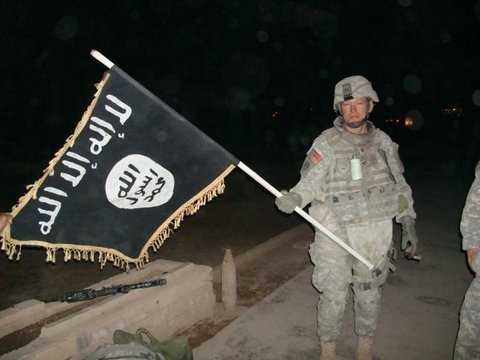
How COVID-19 has Emboldened the Islamic State Part 1: ISIS Operations
Secretary-General Antonio Guterres recently warned the U.N. Security Council that coronavirus will be “potentially leading to an increase in social unrest and violence that would greatly undermine our ability to fight the disease.” Although the priority for most is to find a vaccine for the virus, terrorist groups that threaten US interests abroad seek to use the pandemic as an opportunity to achieve strides in power.
Amidst the push for citizens to isolate themselves and avoid the spread of COVID-19, terrorist organizations mirrored similar calls to their followers, demonstrating the pandemic’s far-reaching effects. In an early March edition of the ISIS newsletter, al-Naba, followers were advised to “stay away from the land of the epidemic” and to wash their hands frequently. Despite promoting public health practices, the Islamic State thrives under the economic chaos and instability that pandemics like the coronavirus cause.
Decreasing the Pressure
With the militant group losing substantial amounts of territory and thousands of their fighters, focus has wavered away from ISIS. In March 2019, the White House declared victory over ISIS, but the terrorist group still has an estimated 20,000 fighters across Iraq and Syria and has successfully carried out attacks. The group has also re-consolidated under the new leadership of Amir Muhammad Said Abdal Rahman al-Mawla.
While the persistence of ISIS was concerning, its growth was kept at bay by international forces bolstering the local security staff in Iraq and Syria. Unfortunately, the pandemic has suspended the integral support and further weakened existing security structures.
By March 29th, coalition powers such as France and the UK had withdrawn most of their training troops in Iraq, citing the spread of COVID-19. Prior to this, the US had already begun the decrease of troops in frontline bases, but the onset of coronavirus has expedited the withdrawal, impairing local security forces sooner than expected. With the Iraqi armed forces prioritizing the enforcement of measures that will stifle the spread of the virus –such as the nationwide curfew– regularly scheduled counter-terrorist operations have been pushed aside.
With the onset of coronavirus, ISIS has increased its local attacks, quadrupling its average number of mortar and rocket attacks, and continuing machine-gun fire and ground assaults on security force outposts along the Iran-Iraq border.
Facing similar issues of limited resources, Northeast Syria is home to makeshift facilities holding over 10,000 ISIS fighters and 70,000 ISIS affiliates. These prisons and IDP camps suffer from overcrowding and weak sanitation protocols, rendering them at higher risk for disease. As desperate prisoners seek to escape the circumstances that make them vulnerable to COVID-19, riots are expected to occur which could result in the escape of ISIS fighters and radicalization of more recruits. Although unrelated to COVID-19, the Ghweran prison in the city of Hasakah experienced an attempted prison break by ISIS prisoners on March 30th. Though no prisoners escaped, the progression of the coronavirus could devastate prison staff and make the next attempts to escape more likely to succeed. With the pandemic crashing the oil market, the continued funding for these facilities is also at risk.
To help mitigate the risk, the coalition against the Islamic State has made a smart but likely insufficient move by providing $1.2 million in medical equipment and riot gear to Syrian prisons.
ISIS’s Next Moves
ISIS was following the development of coronavirus since the beginning of 2020. The early March edition of al-Naba issued a suspension of fighters traveling to Europe, offering an inkling that ISIS operations were also going to be disrupted. This suspension was later contradicted by a new call for fighters to take advantage of the overwhelmed “Crusader nations”. German authorities recently arrested four suspected members of an Islamic State cell charged with plotting attacks on US military bases.
Instead of allowing the epidemic to disrupt its operations, the Islamic State has adapted to the new COVID-19 landscape. Officials are still questioning exactly how governments’ reaction to coronavirus –the closing of borders and prohibiting public gatherings–will affect terrorists’ plans.
Although the closing of borders makes it difficult for ISIS to travel, ISIS will turn its attention to the areas in which it already has a significant presence–Syria and Iraq. Michael Knights argues,
“It will increase rural assassination raids on local village leaders—so-called mukhtars—and use intimidation to increase its ability to raise funds. Disruption to security force clearance operations will increase IS’ ability to make advanced roadside bombs in its hideouts and use these weapons, and other harassment tactics, to keep the security forces buttoned down in their bases.”
The worsening of the global pandemic will push the already fragile states of Syria and Iraq to be opportunities for ISIS to reemerge. In addition to finding opportunities for local attacks, ISIS will utilize the fear of COVID-19 as propaganda to embolden their followers to incite further instability.
Look to Part 2 for how ISIS adopted COVID-19 into its ideology.





